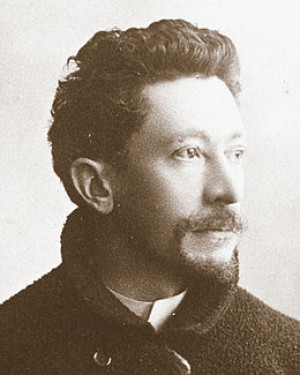Émile Gallé ( - )

Born in Nancy. Émile Gallé, who came from a family of artists, was a French industrialist, master glassmaker, cabinetmaker and ceramist. He is the founder and the first president of the Nancy school in 1901. What is less known about him is his research into genetics and evolution concerning the plant world. He didn't just reproduce it, he took a scientific interest in it.
After studying mineralogy in Germany, he studied glass in Meisenthal and ceramics in Saint-Clément, then joined the family glass business in 1867. He represented his father at the Universal Exhibition. In 1871, he left for London to perfect his English and work at the Kensington Museum and the Royal Botanical Gardens at Kew. Émile Gallé did not limit himself to theoretical instruction, but also learned to blow. In addition to his good knowledge of cabinet making, his family's passion for the natural sciences, and more particularly for plants, led him to drawing. In Nancy he was a pupil of Dominique-Alexandre Godron, a naturalist and doctor. On his return from London, he moved to Paris to study the art of ancient crystals, the enamels of Philippe-Joseph Brocard's Arab lamps, and the Japanese art of Eugène Rousseau. In 1877, rich with all his experiences, he took over the activities developed by his father and moved to rue de la Garenne in Nancy to develop the business. It was in 1878 at the Universal Exhibition that his reputation spread throughout the world by obtaining 4 gold medals. In 1883, he built vast earthenware, glass and cabinet-making workshops where he reserved a room in the centre where he developed his projects. Many artists and craftsmen began to work for him. He opened several counters and regularly exhibited his own work there. In 1889, he was awarded the Grand Prix at the Universal Exhibition. Three hundred artists and craftsmen now work for him. He participated in the 1893 World's Fair in Chicago. The following year, he opened his crystal factory and took part in the Lorraine decorative art exhibition in Nancy. The beginning of the 20th century saw the crowning of his talent. Covered with honour and glory, he became a member of the National Society of Fine Arts in Paris and of several learned societies. He died in full glory in 1904 as a result of an illness, no doubt linked to the practice of his profession.
